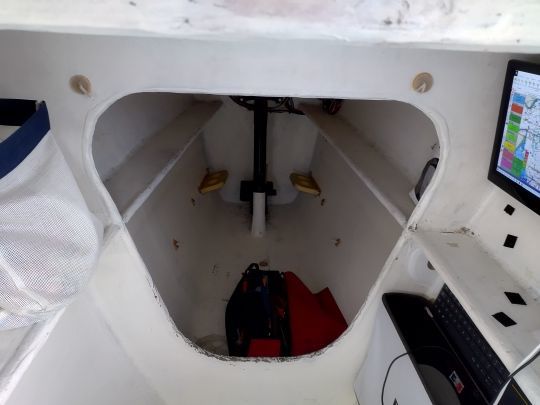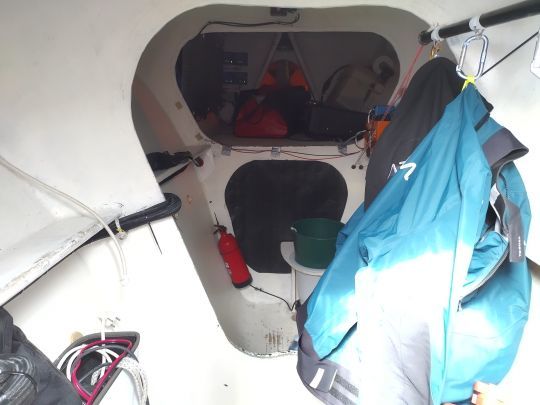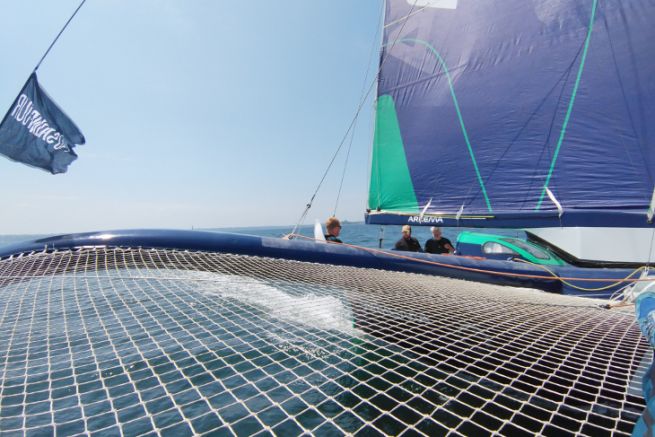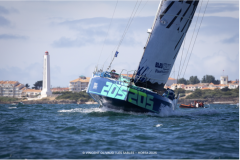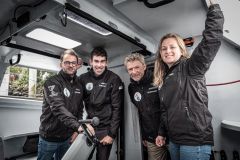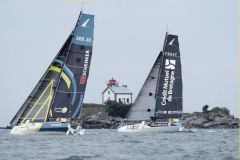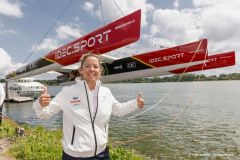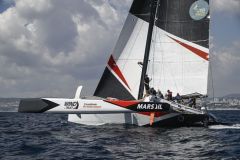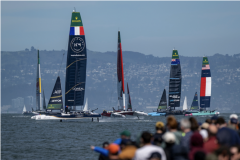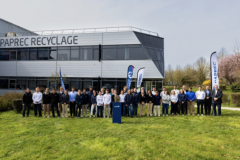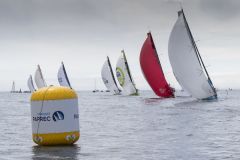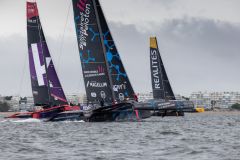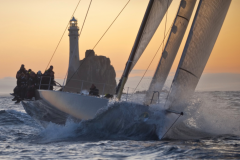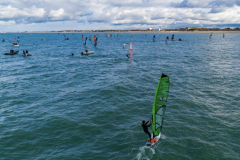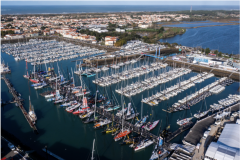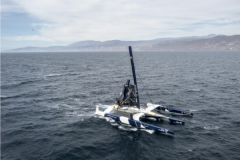A trimaran laboratory of materials
The Arkema 4 trimaran, skippered by Quentin Vlamynck, was launched in September 2020. This 50 feet multihull of the Ocean Fifty class participates in the Pro Sailing Tour circuit and will race in the Route du Rhum 2022. We had the opportunity to sail on the boat before the regattas in Brest and to talk with the skipper about his boat and its particularities.
A specialist in composite materials, Arkema is a rather special sponsor, since it is involved as a supplier in the manufacture of the boat built by the Lalou Multi yard. The trimaran serves as a showcase and test platform for the thermoplastic resin Elium, which Arkema wants to make available to the nautical industry to make boats more recyclable. The front fairings of the trimaran's arms are made with this resin, while the starboard front arm uses recycled resin from the boat's molds.
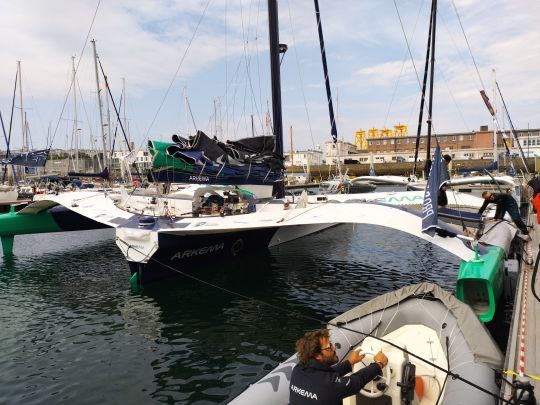
A simple, low-profile cockpit
In line with the philosophy of the Ocean Fifty class, the Arkema 4 trimaran focuses on simplicity. The cockpit houses a single coffee grinder column to manage the halyards and sheets. The lowered cockpit floor allows the boom and roof to be lowered.
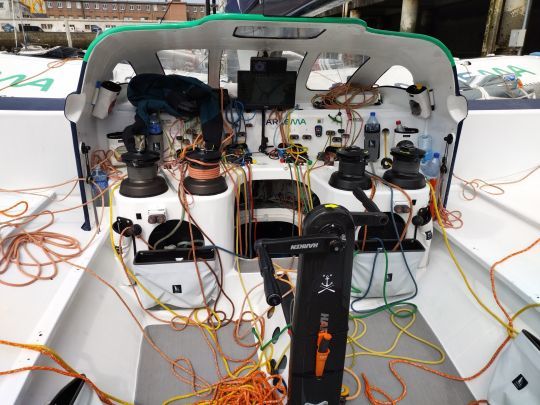
The real waterproof deck of the main float, also lowered, is covered by a fairing. It allows the halyards and adjustments to run directly to the piano, limiting friction, as Quentin Vlamynck explains. "This is one of the things we changed from the previous Noir Désir boat. It's a bit heavier, but it was important. There are still 2 kilometers of line on the first order! By lowering the boom, we were able to move the mast back and keep the mainsail area (editor's note: about 100 m²). This allows us to move away from the forestay and facilitate maneuvers."
The helm stations, one on each side, are reduced to the simplest expression: a seat, a tiller and a winch to control the mainsail carriage. Protected offshore by a windshield, they are completely open in grand prix configuration.

Rigging, appendages and aerodynamics
With multihulls capable of exceeding 30 knots, aerodynamics has become a concern for the Ocean Fifty, like their big Ultim brothers. Stretched tarpaulins allow to take care of the drafts behind the beams and around the furlers of the foredeck.
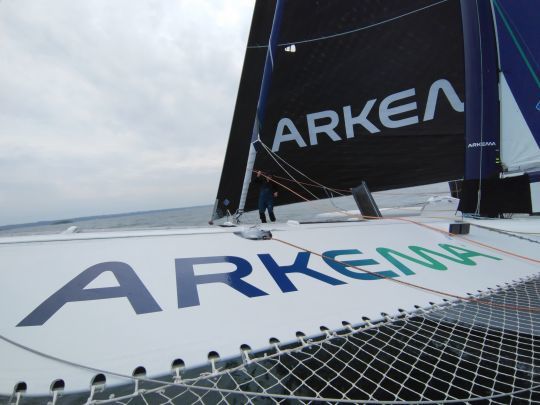
A deck sweeper, a kind of plate under the boom, guarantees a plate effect with the deck.
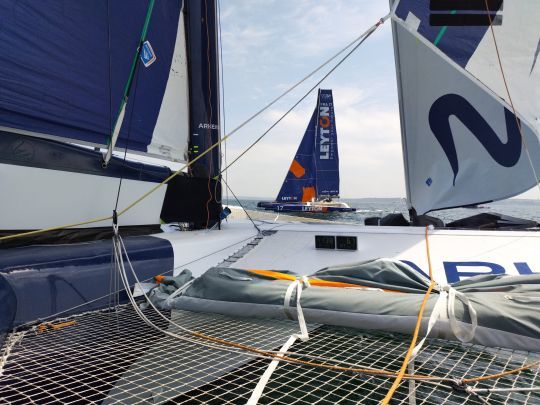
On the rigging side, the wing mast has a headstay, which can be moved from one side to the other with a crew. It is doubled when sailing single-handed to facilitate its use. The rake adjustment allows to adjust the behavior of the boat according to the configuration of the crew reports the skipper. "We'll put the mast more forward in crewed sailing to have power and compensate for the weight of the crew on the stern, while in solo sailing, with more quest, the boat will be more fiery and forgiving."
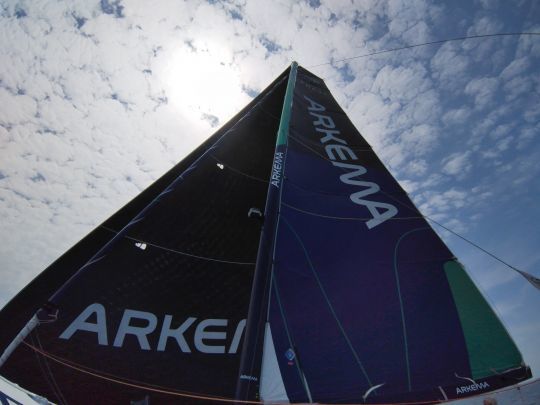
One-designs in the Ocean Fifty class, foils are rather reserved for offshore sailing. Indeed, they add a significant draught.
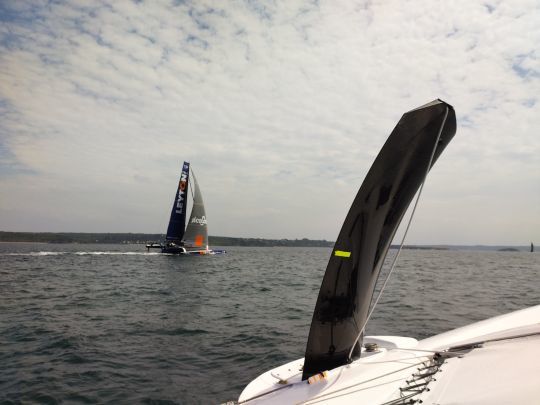
As for the rudders, Arkema 4 has also opted for lightness by leaving them directly visible from the transom.
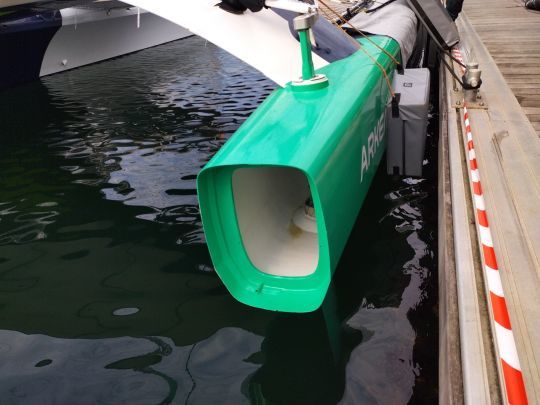
Shelters for sailors
For offshore sailing, Arkema 4 is equipped with a "hut" removable that protects the cockpit.
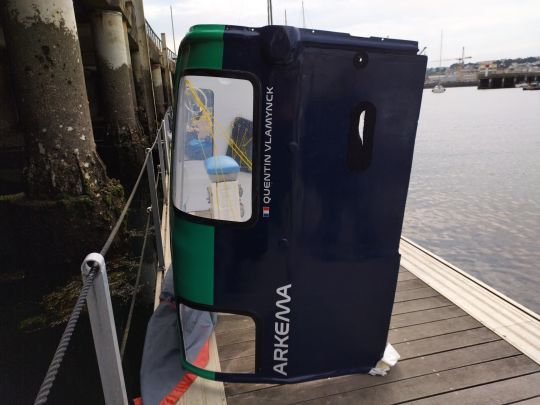
The use of the main hull is limited to the storage of material on the front and a small corner for navigation facing the screen on the back.
